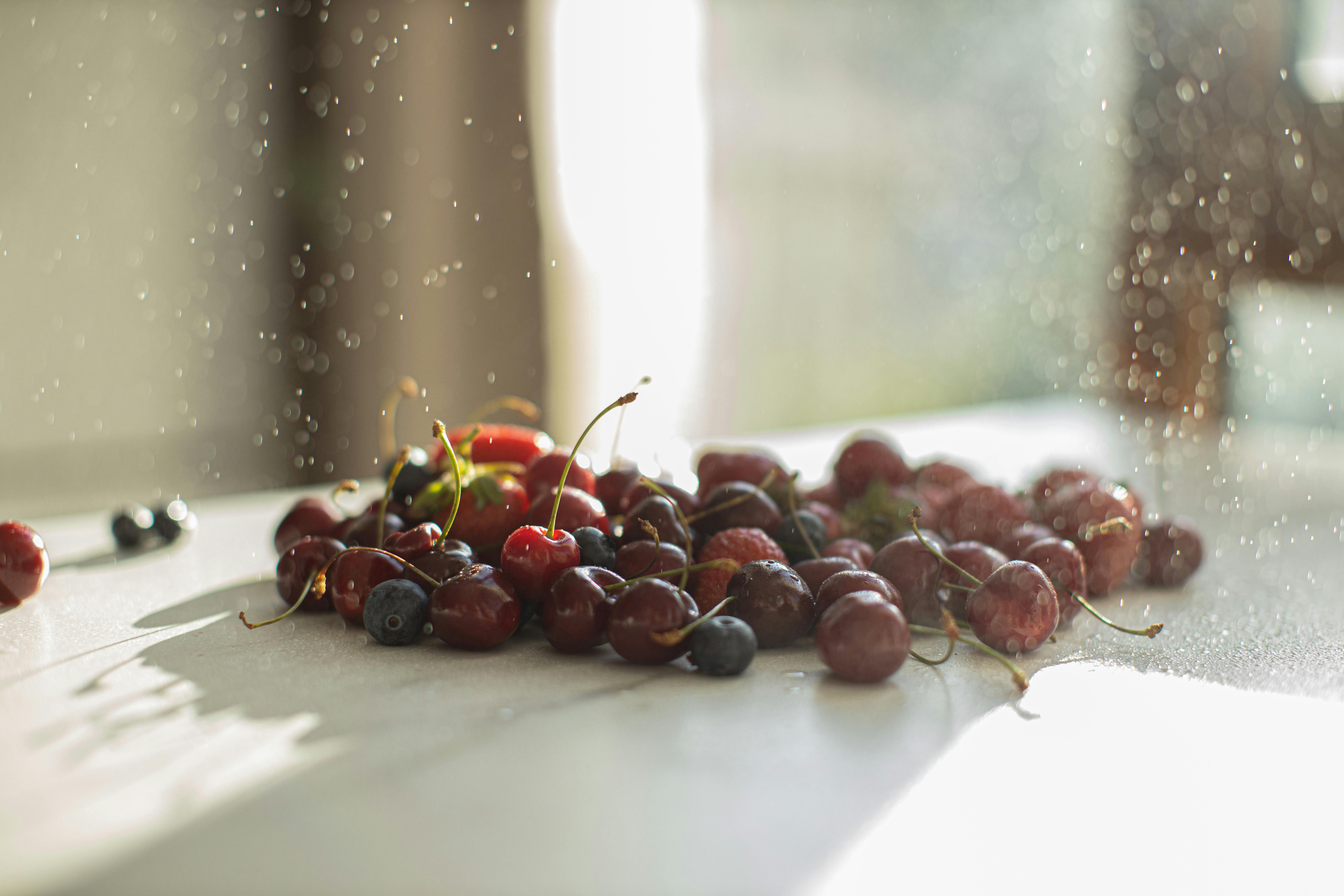Water is essential for all living things, including strawberries. It is important to understand how often and how much you should water your strawberry plants in order to keep them healthy and productive. Knowing the right amount of water for your strawberry plants will help you maximize their yield and ensure a successful harvest. In this guide, we will discuss how often you should water your strawberries and some other tips for taking care of these delicious fruits.It is important to water your strawberries regularly, especially during the summer months. Generally, you should aim to keep the soil moist but not soggy by watering your strawberries every 2-3 days. Make sure to check the soil before watering and avoid watering if it is still wet, as this can lead to root rot.
How Much Water do Strawberries Need?
Strawberries are one of the most popular fruits consumed worldwide. They are delicious, full of antioxidants, and easy to grow. But in order for strawberries to thrive and produce bountiful harvests, they need proper care. One of the most important aspects of strawberry care is making sure the plants receive enough water.
Strawberries need about 1 inch of water per week, either from rainfall or irrigation. If rainfall is lacking, it’s important to water your strawberry plants regularly with a soaker hose or drip irrigation system to ensure they receive an adequate amount of moisture. It’s best to water your strawberries in the morning so that any excess moisture can evaporate before evening and help reduce the risk of fungal diseases.
You should also be careful not to over-water your strawberry plants as this can lead to root rot and other problems. To help prevent over-watering, it’s a good idea to use mulch around your strawberry plants. This will help retain moisture in the soil and help keep weeds at bay, which can compete with your strawberries for water and nutrients.
Overall, strawberries need an adequate amount of water in order to produce healthy fruit. Make sure you provide your strawberry plants with at least 1 inch of water per week either from rainfall or irrigation and be careful not to over-water them as this can lead to problems. With proper care and attention your strawberry plants will reward you with abundant harvests season after season!
What is the Best Time to Water Strawberries?
Watering strawberries is one of the most important aspects of strawberry care. Proper watering can help ensure that your strawberries get the moisture they need to reach their full potential. Knowing when and how often to water strawberries can be tricky, but with a little knowledge and planning, you’ll be able to keep your strawberries healthy and happy.
The best time to water strawberries is in the morning, before the sun is fully up. This allows the water to slowly soak into the soil and reach the roots of the plants without evaporating too quickly. When watering in the morning, be sure to water slowly and deeply so that all of the plants’ roots have a chance to absorb moisture.
In terms of frequency, you should water your strawberries about once or twice per week depending on your climate. If you live in an area with hot summers, you may need to increase your watering frequency to three or four times per week. During extreme heat waves, you may even need to water daily. On the other hand, if you live in an area with cooler summers or dry climates, you may only need to water your strawberries once every two weeks or so.
In general, it’s best not to let your strawberry plants dry out completely between watering sessions; however, avoid overwatering as this can cause root rot and other diseases. You should also avoid watering during mid-day when temperatures are high; instead, opt for early morning or late evening when temperatures are cooler and there is less evaporation from the sun’s heat.
By following these simple guidelines for watering strawberries at the right time and frequency, you can ensure that your strawberry plants get all of the moisture they need for healthy growth and delicious fruit production!
What Type of Water is Best for Strawberries?
When growing strawberries, it is important to provide the right type of water in order to ensure the health of the plants. The best type of water for strawberries is rainwater or distilled water. Rainwater is free from chemical additives and pollutants, making it ideal for growing strawberries. Distilled water is also beneficial because it has been processed to remove any contaminants or minerals that can affect the taste or quality of the fruit.
When watering strawberries, it is important to avoid tap water as much as possible. Tap water contains chlorine and other chemicals that can be damaging to strawberry plants. In addition, tap water can contain high levels of calcium and magnesium which can build up in the soil and cause problems with nutrient absorption. If tap water must be used, allowing it to sit out overnight before using will help to reduce the amount of chlorine and other chemicals in it.
It is also important not to overwater strawberry plants since too much moisture can cause root rot and other diseases. A good rule of thumb is to wait until the top inch of soil has dried out before adding more water and then only add enough so that the soil feels damp but not soggy. Additionally, make sure that the soil drains well after watering so that any excess moisture can be removed from the roots quickly.
By providing your strawberry plants with rainwater or distilled water, you will ensure that they receive all the nutrients they need without any added chemicals or minerals which could damage them. Additionally, by avoiding overwatering you will help your strawberry plants thrive and produce sweet, delicious fruit!
Signs of Under-Watering Strawberries
Under-watering strawberries can cause a number of problems. The leaves of the plant will start to turn yellow and wilt, and may even dry up and curl inwards. The plant may also become stunted or stop growing altogether. The fruit will become small, dry, and hard, and won’t have as much flavor. Additionally, the fruit may be prone to fungal infections such as mildew or gray mold.
Signs of Over-Watering Strawberries
Over-watering strawberries can also cause a number of problems. The leaves will begin to turn yellow and wilt, but instead of curling inwards, they will curl upwards. The plants may also become stunted or stop growing altogether. The fruit will become soft and mushy, and won’t have as much flavor. Additionally, the plant may be prone to fungal infections such as root rot or powdery mildew.

The Benefits of Properly Watered Strawberries
Strawberries are a delicious and nutritious fruit that can be enjoyed in a variety of ways. However, proper watering of strawberries is essential for maximizing their health benefits. Properly watered strawberries are more flavorful and have higher levels of antioxidants, vitamins, and minerals. Additionally, properly watered strawberries can help protect against certain diseases and reduce inflammation.
One of the most important benefits of properly watered strawberries is that they are more flavorful. As the water content of the berries increases, so does their sweetness. This makes them more enjoyable to eat and adds to the overall flavor profile. Additionally, properly watered strawberries have higher levels of antioxidants which help protect against oxidative stress and damage from free radicals.
Properly watered strawberries also contain higher levels of vitamins and minerals which are essential for good health. Vitamin C is one such nutrient found in strawberries that can help support the immune system while also aiding in collagen production for healthy skin. Other vitamins and minerals found in properly hydrated strawberries include folate, potassium, magnesium, iron, manganese, zinc, selenium, copper, phosphorus, riboflavin, vitamin A and K as well as dietary fiber.
Finally, consuming properly hydrated strawberries can also help reduce inflammation throughout the body due to their high levels of polyphenols which have been linked to anti-inflammatory properties. Studies have also shown that regularly consuming properly watered strawberries may be beneficial in reducing risks for certain types of cancers as well as cardiovascular diseases due to their high antioxidant content.
In conclusion, properly watering strawberries is key to unlocking the full potential of this delicious fruit’s many health benefits including improved flavor profile, higher levels of nutrients such as vitamins C and A as well as antioxidants; all while providing anti-inflammatory properties for reducing risks for certain types of diseases such as cancer or cardiovascular disease.
How Can I Tell if My Soil is Too Dry for My Strawberries?
Knowing when your soil is too dry for your strawberries is important for helping them to stay healthy and productive. Generally, you should water your strawberry plants when the soil feels dry to the touch. If you stick your finger into the soil and it feels dry, then it’s time to water. You can also check the moisture level of the soil by using a moisture meter. The meter will give you an accurate reading of how much moisture is in the soil. If the reading is below 8 on a scale of 0-10, then it’s time to water.
Another way to tell if your soil is too dry for your strawberries is by looking at their leaves. If they appear wilted or are starting to yellow, this may be a sign that they need more water. Additionally, look at the roots and check for signs of discoloration or rot—these are both indications that there isn’t enough moisture in the soil.
Finally, if you see that your strawberry plants aren’t producing any fruit or their fruits are small and lack flavor, this could also be a sign that the soil is too dry for them. In this case, you should increase watering and keep an eye on them to see if there’s an improvement in their growth and production after a few weeks.
Overall, knowing when your strawberry plants need more water can help ensure they remain healthy and productive throughout the growing season. By checking the moisture level of the soil regularly with either your finger or a moisture meter, as well as keeping an eye out for signs of wilting or discoloration in their leaves and roots, you can tell when it’s time to water them again.
Measuring Moisture Content in Soil for Strawberries
Monitoring moisture content in soil is essential to successful strawberry cultivation. Too much or too little moisture can lead to stunted growth, disease, and even death of the plants. As a result, growers must be able to accurately measure and adjust the moisture content of the soil for their strawberries.
Luckily, there are a variety of tools available that can be used to measure the moisture content in soil for strawberries. The most common tool is a soil moisture meter, which measures the amount of water in the soil and provides an accurate reading on a digital display. This type of tool is ideal for growers who need an immediate and accurate reading on their soil’s moisture levels.
Another popular option is a soil probe or auger, which uses sensors to measure water levels at specific depths within the soil. This type of tool can help growers get more detailed information about where and how much water is present in their soil. Additionally, it can be used to monitor multiple areas at once, allowing growers to quickly identify any issues that may arise with their strawberry plants.
Finally, there are various types of sensors available that can be used to measure the amount of water present in different parts of a strawberry plant’s root system. These tools allow growers to identify if any part of the root system is not receiving enough water and take corrective action accordingly.
Overall, there are many different types of tools available that can be used to measure moisture content in soil for strawberries. By using these tools, growers can ensure that their strawberries have optimal growing conditions and get the best possible yield from their crop.

Conclusion
Watering your strawberries regularly is essential for them to grow and produce an abundant harvest. The amount of water you give them should be adjusted according to the weather conditions, soil type, and other factors. A good rule of thumb is to water your strawberries once a week if there is no rainfall, or twice a week when the weather is hot and dry. During the rainy season, you may need to reduce your watering frequency. By paying close attention to your plants and adjusting your watering schedule accordingly, you can ensure that your strawberries get the hydration they need while also avoiding issues such as root rot and fungal diseases.
Ultimately, the amount of water that you give your strawberries will depend on several factors. It’s important to understand these factors in order to provide adequate hydration without over-watering or under-watering them. By following these guidelines, you can ensure that your strawberry plants remain healthy and productive throughout the year.



